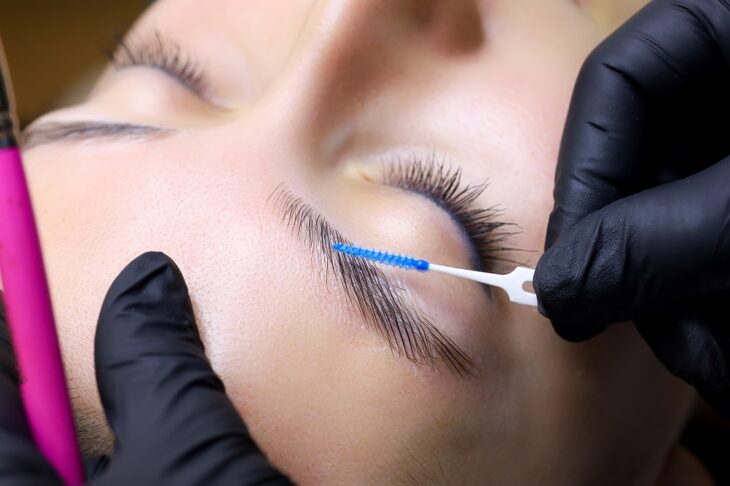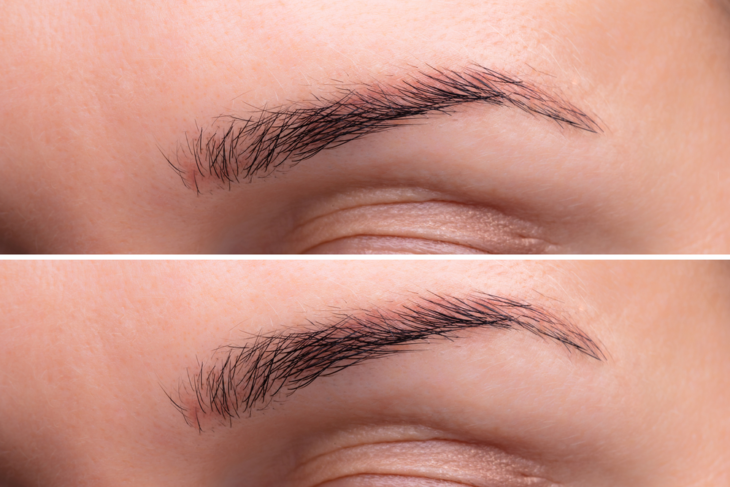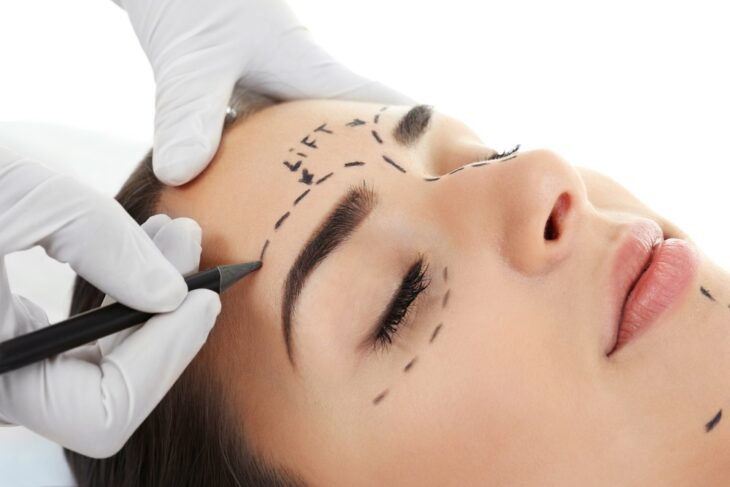Many individuals who have wrinkles, frown likes on their forehead, hanging upper eyelids, or drooping eyebrows tend to get a brow lift surgery. The brow lift procedure makes it possible to make you look young and happy without aging signs.
Generally, the recovery period after a brow lift differs from one individual to another. However, if you want detailed information about the time needed to heal from a brow lift, then scroll down this guide.

Source: jevplasticsurgery.com
Contents
Introduction To Brow Lift
A brow lift is a cosmetic surgery that lifts the brows, and it has other names such as forehead lift or forehead rejuvenation. By lifting the soft tissue and skin of the brow and forehead, the brow lift procedure enhances the look of the forehead, brow, and the region near the eyes.
You might choose to have a brow lift if you have a low, drooping brow or uneven brows. A brow lift might also boost your self-confidence and facial look. This surgery can be done alone or with other facial procedures, like a face lift or eyelid surgery (blepharoplasty).
Many issues can be dealt with or rectified with brow lift surgery, such as wrinkles, heavy brow, forehead lines, downturned eyes, drooping upper eyelids, sagging eyebrows, crow’s feet, and sleepy or angry appearance. You can reach out to eyesdefined.com to learn more about brow lift London.

Source: make-up.rs
What Is The Recovery Period For Brow Lift?
The time it takes for a patient to recover from a brow lift varies based on the surgical approach used (classic, endoscopic or limited incision technique). For example, healing from a traditional brow lift often takes a longer time than recovering from an endoscopic brow lift.
In nearly a week, the stitches or pins in the incisions can be discarded. In the case of temporary fixation screws, they will be taken out after two weeks. Though the recovery time differs, several people can heal from the brow lift process anywhere from 10 to 14 days.
During the initial week after the surgery, primarily between 24 to 48 hours after the operation, you might probably feel some pain. As a result, setting aside a space in your home for your rehabilitation where there will be no disturbance is the best way. Make sure not to sleep on your side or stomach since it may cause your surgical stitchings to loosen.
In general, you might experience up to some level of pain, bruising, and bulging in the initial days following the brow lift treatment. It is best for patients to sleep on their backs by putting their heads on a high platform to stimulate quick healing and lessen swelling. In addition to that, using cold compresses and taking the medication approved by the doctor can assist in curing these symptoms.
After a brow lift surgery, several patients can start working again after the first one or two weeks. However, you have to remember that some swelling will remain. Besides that, the patients should not do any vigorous physical activity for about four to six weeks or until the doctor says so. Though you can notice a difference in your appearance immediately after the operation, full effects might need six months or more to appear. At that time, even swelling goes down and the tissues will settle.
Momentary numbness or lack of sensation is a common and expected side effect of a brow lift surgery. In addition to that, it might need about six to twelve months to get the full sensation in the forehead and top of the head. However, it can occur quickly for some patients.
The major amount of swelling will diminish in approximately two weeks. After that, patients can start making normal facial gestures. They can also raise their eyebrows, but they might still feel a bit numb. You have to remember that the numbness following a brow lift surgery may take some getting accustomed to.

Source: pinterest.com
What Should You Do To Promote Optimal Healing?
Follow the below-listed things in order to improve your chances of a comfortable and quick recovery:
- For about four weeks, sleep by putting your head on a high platform.
- In order to reduce swelling, place cool compresses on your eyes and forehead.
- For dry or irritated eyes, utilize tear solutions.
- Put on the compression dressing until your doctor tells you to take it off.
- As directed by your doctor, take antibiotics and pain relievers.
- Avoid smoking or consuming alcoholic beverages.
- Follow the doctor’s incision care instructions carefully.
- Make sure not to perform heavy lifting or physical activities until you have received clearance from your doctor.
- Any significant pain should be reported to your doctor since it might be a sign of a problem.

Source: vox.com
When To Contact The Doctor
Your forehead may be gently bandaged after the surgery to reduce swelling. In order to drain extra blood or liquid, a tiny tube may be inserted along with the incision site. Your doctor will provide you with particular instructions for dealing with the incisions. In the initial days following a brow lift, you should:
- Take pain medication as prescribed by your doctor and sleep with your head in an elevated position.
- Put cold compresses to curtail swelling
- Make sure not to put too much pressure or motion on your incisions.
Itching and numbness may occur when your incisions start to heal, but they will usually fade with time. The doctor might discard bandages from the incisions in one or three days if they are covered. Stitchings are usually taken out between seven to ten days after surgery.
Consult your doctor after you do not feel any discomfort to know if it is safe to resume your everyday activities. However, you have to remember that swelling may linger for numerous weeks. With time, the incision lines will vanish. If you want, you can hide the long-term bruises with cosmetics.
If you develop the following symptoms after a brow lift, call your doctor right away.
- Breathing problems
- Chest discomfort
- Heartbeat irregularities

Source: kunkelplasticsurgery.com
Bottom Line
The recovery period varies from one person to others depending on the type of surgery. However, the average time to heal from a brow lift procedure ranges between 10 to 14 days right after your surgery.
